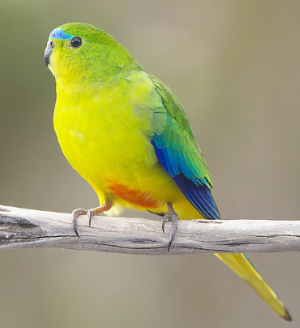317. The worth of wildlife
What is a threatened species worth? It may seem like a strange question, but it’s one that environmental economists have done a fair bit of research on.
If you measured their worth in commercial terms, the answer would be, probably nothing in most cases. But most of us care about threatened species and would be willing to pay something to prevent them from going extinct. There have been many studies conducted by environmental economists to estimate just how much people are willing to pay to protect particular threatened species. PhD student Vandana Subroy is lead author on a new study in the journal Ecological Economics where we conducted a “meta-analysis” – a review of 109 willingness-to-pay estimates from 47 studies around the world.
We found that the average willingness to pay to protect a species was US$414 per household (once off, not per year). Over a large population, this adds up to very large budgets being justified – vastly larger than the current budget for threatened species recovery in Australia.
Of course, the range across different species in different studies in different countries was enormous: as low as US$1 per household and as high as US$4,400.

Not surprisingly, people’s willingness to pay was much higher for “charismatic” species. Determining which species are “charismatic” is clearly subjective, but it’s safe to say they are typically large vertebrates that instinctively appeal to humans (e.g., elephants, pandas, and whales). In our study, species were treated as charismatic if they had been characterized as such in the original study, or elsewhere. The average willingness to pay was US$572 for charismatic species compared with US$106 for non-charismatic species.
Surprisingly the difference in willingness to pay between developed and developing countries was small, and not statistically significant.
One of the most surprising things we learned from doing the study was just how poorly done many of the studies were. In many cases, it was not at all clear in the question that was asked of survey respondents what was being valued. An amazing number of surveys were not clear about the base case – e.g. if there was no new intervention, what would be the probability of extinction of the species? Without that, you can’t give a meaningful willingness-to-pay response. Many surveys asked vaguely about “protecting” the species, but without saying what it was being protected from, or how protected it would be. Because of these and other weaknesses, we had to leave a lot of studies out of the meta-analysis. I commented to my colleagues that I wanted to cancel the economics degrees of the people who did these studies (assuming they had economics degrees).
If you’re interested, the paper can be downloaded for free even without a subscription, until August 30, 2019: here.
Further reading
Subroy, V., Gunawardena, A., Polyakov, M., Pandit, R. and Pannell, D.J. (2019). The worth of wildlife: A meta-analysis of global non-market values of threatened species, Ecological Economics (forthcoming). Journal web page
Interesting report, thank you David. Charismatic species also have a value for tourism, eg. whales visiting the bays near Warrnambool which attract a lot of visitors there in winter, an otherwise flat time for hotels and restaurants by the sea, I guess. These species probably have a substantial ‘present value’, meaning (for non-economists) the amount of money one would have to put in the bank today in order to generate the same income, year on year. Bearing in mind that tourist income would, more or less, keep pace with inflation, the present value is probably very high. Check out the prices of inflation-linked annuities. I could send a short unpublished mathematical study of this, if it is of any interest. John C
Thanks John. Yes, some threatened species also generate market benefits. Our report focuses only on non-market benefits.
Hi David,
Interesting paper. Thanks for sharing.
I was wondering whether you purposely avoided the term value and used worth instead. The worth, in common parlance is what you can sell it for – the exchange value, that is often approximated by the perpetual rent. The real issue in conservation is scarcity value – in this case how much it will cost to replace, in that sense the value of threatened species will approximate infinity, more like ecologists think.
Cheers
Thilak